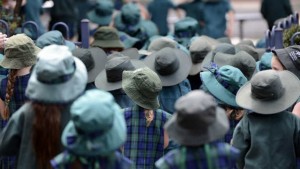Home » Commentary » Opinion » Memo to the ABC: class warfare doesn’t improve schools
· Spectator

 An ABC News investigation has lifted the lid on the claimed ‘great education divide’ in Australian schools. This time, rather the well-trodden tale of ‘giving a Gonski’, it takes aim at so-called ‘infrastructure arms races’ of private schools.
An ABC News investigation has lifted the lid on the claimed ‘great education divide’ in Australian schools. This time, rather the well-trodden tale of ‘giving a Gonski’, it takes aim at so-called ‘infrastructure arms races’ of private schools.
A cursory read would have you convinced that rich schools are unfairly cashed up at the expense of taxpayers, and of poorer schools. But look at the facts, and the truth becomes apparent.
Capital funding is responsible for less than nine per cent of total school funding. And in terms of all public money on schooling, publicly funded capital spending is responsible for around 4.5 per cent. Of this, almost all goes to government schools — just over half of one percent (0.52 per cent) of all government money on schools is spent on capital works in private schools.
Almost all money for capital works in non-government schools comes from parents — 95 per cent in Independent and 88 per cent in Catholic schools. If parents in these schools choose to invest more in their child’s education or even want their money to build an art gallery, that’s their business.
Sanctimoniously shaming parents — and invariably children — is hardly constructive and does not have educational needs in mind.
Where public funds do go to private schools, there is a rigorous process. Block grant authorities in each state are responsible for assessing eligibility and prioritising prospective projects. They are required explicitly to prioritise infrastructure in less advantaged schools and reject projects where there is no demonstrable need.
At the end of the day, it is government schools that take the lion’s share of capital funding from government anyway — 90 per cent of it. And that is probably as it should be — there is little capacity in public schools to revenue raise for capital. That four well-off schools spent more (of their own money) than the poorest 1800 combined is neither here nor there.
But we have to ask, why do some non-government schools have such impressive facilities? Well, for parents in these communities to be willing to pay higher fees — which, remember save the taxpayer substantially — then state of the art facilities are often necessary. And let’s not forget that these taxpayers pay twice — they are also compelled to fund the public system, as there are no rebates (unlike with private health insurance for instance).
The education system can’t keep being treated as a Robin Hood scheme. School funding cannot redress every inequity in society. Needs-based funding arrangements have been in place for decades to address disadvantage already. Continuing to use education to fire shots in class warfare is unhelpful to parents, children, and the education system as a whole.
Glenn Fahey is a research fellow in the education program at the Centre for Independent Studies.
Memo to the ABC: class warfare doesn’t improve schools